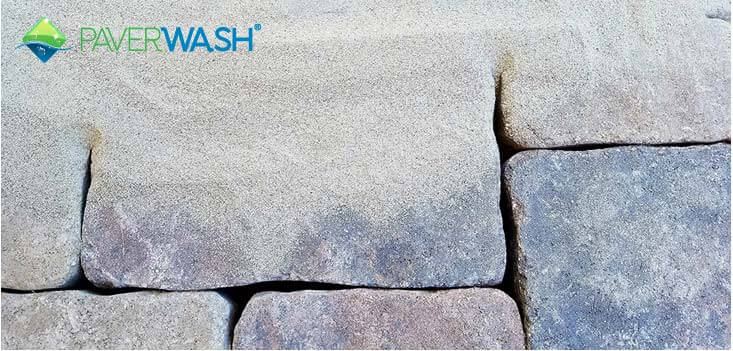
What is Polymeric Sand?
Polymeric sand is a mixture of premium sand and polymeric powder and when activated with water, it hardens and binds to the pavers, strengthening and creating optimal stability throughout your entire paver system.
What is joint sand?
Joint sand is installed in between each paver stone and is a vital part of the interlocking paver system. Paver joint sand provides stability to keep the stones from shifting under pressure, prevents water from seeping underneath your pavers, helps to prevent weed growth and blocks out pests and insects. It is crucial to ensure that joint sand is filled as needed to keep your pavers in place and looking their best.
What is stabilizing sealer?
Stabilizing sealer is a special protective spray that contains the same stabilizing features as polymeric sand, but in a liquid form. When stabilizing paver sealer comes in contact with sand, it hardens and strengthens the pavers joint, just like polymeric sand.
Brand New Pavers Installation: Recommend – Polymeric Sand
Polymeric sand is such a great tool and vital resource when it comes to installing new pavers due to its ability to harden and create strong joints.
Once the pavers have been carefully arranged, about 1 1/2” layer of polymeric sand is added in between each stone and activated with water to further solidify and stabilize your paver system. It is crucial that the polymeric sand is installed up to 1/8” below the paver’s chamfer (polymeric sand must never be the same height as the stone itself).
Any loose polymeric sand that remains on the surface should be blown away with the proper equipment such as a leaf blower and activated with water to initiate the solidifying process (“wet setting”). Water will then activate the cement particles and polymers in the polymeric sand which binds each paver stone together and hardens the joints.
Restoration and Maintenance of Existing Pavers: Recommend – Premium Joint Sand
Premium joint sand is the best choice with it comes to refilling and restoring your missing paver joint sand. Compared to polymeric sand, premium joint sand takes less absorption and drying time which makes the restoration process faster and more efficient. Premium joint sand is also more finely milled and is available by the bag. This allow for more control over the amount poured when the joints are being filled.
If you are looking to fill up missing joint sand in between your pavers, then premium joint sand paired with a spray stabilizer sealer will be the best choice.When spraying the sealer on top of your pavers, we deliberately wet the joint areas and allow the special sealer that includes stabilizer polymerics to penetrate the new joint sand. The sealer liquid will penetrate into the sand and when dried, the sand becomes hard and binds to the pavers and preexisting joint sand (if relevant). This process will not work with polymeric sand as the polymeric sand manufacturers recommend at least 1 ½” of thickness which is not always available in most pavers restoration. By using premium joint sand to refill your pavers joints, you can save time and money while making the bond between your old sand and new sand stronger and longer lasting.